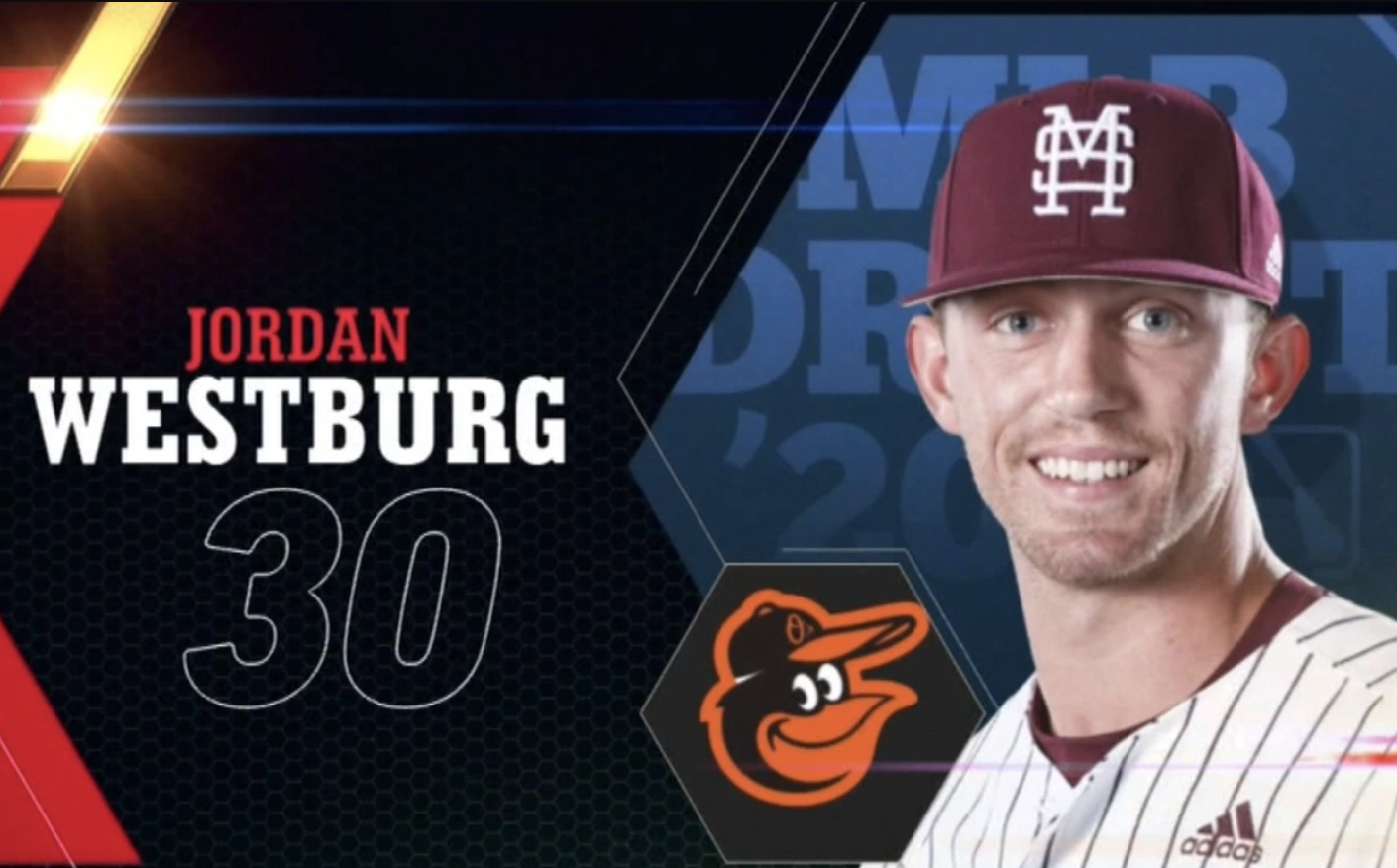submitted by Jared Pinder
If there is a theme with Mike Elias’s Players he has acquired in the three years he has been in charge of the Orioles, he wants projectable prospects with a good track record of success entering the system. This type of profile often leads the Orioles to draft from college rather than high school.
This strategy was seen in the 2020 draft where Elias drafted Jordan Westburg out of Mississippi State instead of taking an over-slot high schooler in the compensation round. Westburg was a bit surprising because he never really showed anything exceptional in college and was seen as more of a role player than a solid starter when/if he got to the majors.
Westburg has taken those concerns of not showing anything exceptional in college and has put them aside and is showing a lot of solid to above-average skills on the field. He started in Low–A Delmarva at the beginning of this year, where he hit .366/.484./592 with three home runs and five doubles in 20 games. He got moved to Aberdeen with those impressive numbers, where he is currently hitting .299/.407/.497 with seven home runs, 14 doubles, and a .904 Ops. He is collectively hitting .317/.428/.522 with ten home runs, 19 doubles, and an Ops. of .951.
Westburg’s primary skills are his pure hitting ability and patient approach. He has a smooth line-drive swing that he uses to produce a ton of contact, and he doesn’t often get beat a ton with pitches like high fastballs. He has tallied 54 hits this season and has gone on multiple hit streaks, continuing to show how good of a pure hitter he is. This is when his approach comes in, and it has been the most surprising aspect of Westburg for me. Westburg has 140 TB this year and has a high walk rate of 13 percent. He also has an approach that could work for a long time. He takes nearly half of his batted balls the opposite way, and 26 percent of his batted balls go to center field. When you add his approach with his pure hitting ability, you have a player profile that might have significant production in the majors.
Westburg also has one improving tool to focus on, his power. As I mentioned, he never hit for a lot of power in college, so this is defiantly surprising. Westburg not only has a decent amount of extra-base hits and home runs, but he has also been hitting the ball consistently hard. He has a Slugging Percentage of .522 this year and has a .198 ISO in Aberdeen. This shows just how much power he has been showing off, and when you mix this in with other positives, he shows he can be something special.
While Westburg has a lot of pluses, he also does have some noticeable flaws, the first being his speed. His speed isn’t truly game-breaking, and he isn’t slow per se; he just isn’t blazing fast. Westburg’s main issue is that he isn’t the best defender wherever you put him. The Orioles have been putting him at third base and shortstop this year, and he hasn’t been that impressive at either. He has made a lot of errors and seems to be a little limited with his range. He also doesn’t have that strong of an arm, so his fits in the infield are a little tough to figure out.
Overall, Westburg is a very projectable prospect with an ability to be patient and put the ball in play while also having improving power with limited speed and at least average defense.
When I think of a comp to Westburg, I think of the Rockies version of DJ LeMahieu, with worse defense.
He has the potential to become a 20-20 player and could be a precious player for the Orioles down the road.
Jordan Westburg should be the standard for what Mike Elias and the Orioles value when it comes to prospects and scouting.









